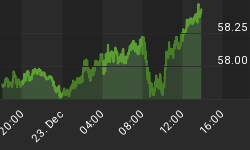
Many people believe there is a significant risk that the Irving Fisher debt-deflation theory of great depressions is still an economic threat today. They overlook the fact that Fisher published his theory examining debt-deflation events under a gold standard, which does not apply today. Financial credit contractions therefore take a different appearance.
The events he described arose as a consequence of the earlier expansion of bank credit in a fractional reserve system when the currency being used was convertible into gold. This was the case until 1933, when Fisher wrote his definitive article for Econometrica. Under those circumstances, it is obvious that contracting credit leads to a self-feeding liquidation of assets, driving their prices down, and an increasing demand for money, i.e. gold. This was reflected in the gold revaluation that took place that year.
This is not the situation today. The absence of the gold discipline allows central banks to replace credit with quantities of raw money sufficient to ensure that Fisher's debt-deflation is bought off.
Another way of looking at it is in the context of the aftermath of the banking crisis five years ago. Before the banking crisis both banks and their customers were happily expanding their credit and debt respectively, and it was the crisis that brought a sudden end to those care-free days. There was a sudden switch in behaviour that Irving Fisher would have recognised as tipping us into a debt-deflation depression. Initially, the price effect was dramatic: in the UK for example, new luxury cars suddenly became available at discounts of up to 40%. It affected Europe and the US as well, which is why governments stepped in with scrappage schemes, cash-for-clunkers and so on. Other capital goods, such as property were similarly affected.
What had happened was an increase in preference for money over capital and consumer goods, or a dash for cash. The price effect was contained and reversed through unprecedented government intervention by TARP and other programmes in the US, and by bank rescues in the UK and Europe. This has been backed up by quantitative easing and zero interest rate policies that persist to this day.
Fisher's debt-deflation event happened five years ago and was bought off by ensuring banks had enough new money to ride out the storm. None of this would have been possible without the freedom to expand the money quantity indefinitely. No longer do we have to find gold to repay our creditors.
Now we can consider a second question: will gold be sold in order to pay back currency-denominated debt?
This could be a factor when gold is widely owned, but it is not. The recent shake-out in gold prices has certainly taken care of that, and there has been a substantial transfer of ownership to Asian countries and Russia. These new owners generally regard gold as a refuge from paper money, not as an asset to liquidate to pay down debt. To them it is super-money, to be hoarded.
It is indicative of our economic biases that we completely overlook the differences between the sound money of 1929/30 and the infinitely expandable money of 2008/09. We make this error because today's economists lead us astray with a fundamental belief that the state through monetary intervention can fix everything.
Even though today's economists are a broad church they follow beliefs instead of well-reasoned economic theory. Beliefs are better left to clerics.
















